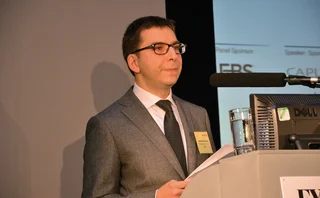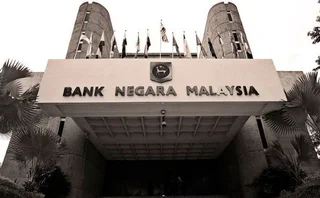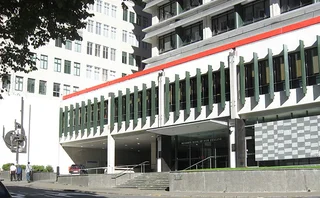
Why the regional Federal Reserve banks are up in arms
A number of presidents of regional Federal Reserve banks and senior staff have recently expressed dissent from the official line taken by the US authorities in managing the banking crisis.
This development might surprise central bankers in other countries, used as they are to enforcing conformity among officials of their organisation to the official line. It would be astonishing, for example, if several governors of euro-area central banks were to suddenly challenge Jean-Claude Trichet's handling of the crisis or the crisis management policies of governments of euro member states. Collective responsibility and cover-ups are the watchwords in Europe.
The heads of the regional banks are particularly concerned with the inequities and inefficiencies arising from official protection of banks deemed too big to fail.
In April, Tom Hoenig, president of the Kansas City Fed, said actions that had been taken in an attempt to protect the largest US institutions from failure risked "prolonging the crisis and increasing its cost". Support for firms considered too big to fail had provided them with a competitive advantage and subsidised their growth with taxpayer funds. They were, he said, not only too big but also "too complex and too politically influential to supervise on a sustained basis without a clear set of rules constraining their actions".
To those who might be surprised at such forthright criticism from a senior official, he reminded his listeners that the 12 regional banks were set up by the US Congress "specifically to address the populist outcry against concentrated power on Wall Street". He added: "Its structure reflects the system of checks and balances that serves us well at all levels of government, and it is the reason I am here today able to express an alternative view."
A few weeks later, another senior Federal Reserve official also asserted the implicit guarantee the government would step in and save those institutions deemed too big to fail was a key cause of the current economic malaise.
Speaking at the Asian Banker Summit in Beijing on May 11, Jeffrey Lacker, president of the Richmond Fed, said the existence of the financial safety net created incentives for too-big-to-fail institutions to pay little attention to some of the biggest risks.
"Their tendency to underprice such risk exposures reduces market participants' incentive to prepare against and prevent the liquidity disruptions that are financial crises, thus increasing the likelihood of crises."
It was, Lacker said, "worth noting some large firms that appear to have benefited from implicit safety-net support were heavily involved in the securitisation of risky mortgages".
Lacker said the implicit belief that some institutions were too big to fail had built up over the years in response to a series of events and government actions involving large financial institutions.
Gary Stern, the president of the Minneapolis Federal Reserve, has also been a vociferous critic of the Fed's bank bail-outs. Writing with Ron Feldman, the senior vice-president for supervision, regulation and credit at the Minneapolis Fed, for a book entitled Towards a New Framework for Financial Stability (published by Central Banking Publications), Stern said the Fed was right to come to the rescue of Bear Stearns, but criticised the decision to expand its safety net as "not subtle or implied".
"Uninsured creditors of other large financial firms may now have heightened expectations of receiving government support if these firms get into trouble," he said.
More recently, in a statement to the Committee on Banking, Housing and Urban Affairs on May 6, Stern returned to the subject: "If policymakers do not address too big to fail, the US will likely endure an inefficient financial system, slower economic growth, and lower living standards than otherwise would be the case."
Gary Stern is retiring as he turns 65 in a few months, the mandatory retirement age for senior officials in the reserve banks.
Contrary to public perception, the 12 regional Fed banks are not government agencies. Nor are they private banks. Each is owned by its member commercial banks.
This story first appeared in Central Banking's Newsmakers email, a sister publication to Risk. Click here to sign up to this free email newsletter.
For daily Central Bank News, click here.
Only users who have a paid subscription or are part of a corporate subscription are able to print or copy content.
To access these options, along with all other subscription benefits, please contact info@risk.net or view our subscription options here: http://subscriptions.risk.net/subscribe
You are currently unable to print this content. Please contact info@risk.net to find out more.
You are currently unable to copy this content. Please contact info@risk.net to find out more.
Copyright Infopro Digital Limited. All rights reserved.
As outlined in our terms and conditions, https://www.infopro-digital.com/terms-and-conditions/subscriptions/ (point 2.4), printing is limited to a single copy.
If you would like to purchase additional rights please email info@risk.net
Copyright Infopro Digital Limited. All rights reserved.
You may share this content using our article tools. As outlined in our terms and conditions, https://www.infopro-digital.com/terms-and-conditions/subscriptions/ (clause 2.4), an Authorised User may only make one copy of the materials for their own personal use. You must also comply with the restrictions in clause 2.5.
If you would like to purchase additional rights please email info@risk.net
More on Central banks
Adopt FX code or face regulation, warn central bankers
Global code of conduct must be adopted, Schiavi and Debelle insist
Malaysia central bank: credit reporting could unite Asean markets
Asean Economic Community faces challenges, says deputy governor Muhammad bin Ibrahim
BoE's Carney: liquidity support for CCPs is a 'last-resort option'
BoE governor insists clearing houses must have enough liquidity to cope with default of two big member firms
BoE deputy governor Paul Tucker quits after 33 years
Deputy governor is bound for academia in the US after helping with transition to new Carney regime
Local regulators push for consistent standards across Asean region – Thai SEC interview
Underpinning the integration of regional capital markets is a major concern for Vorapol Socatiyanurak, secretary general of Thailand's Securities and Exchange Commission
New governor signs revised policy target agreement in New Zealand
The Reserve Bank of New Zealand’s policy targets agreement will come into effect on the same day Graeme Wheeler takes over as governor; document includes "stronger focus" on financial stability
Central banks turn to RMB assets
The international brigade
Central banks launch joint investigation into Libor scandal
Economic Consultative Committee announces examination of reference rates used in financial markets







